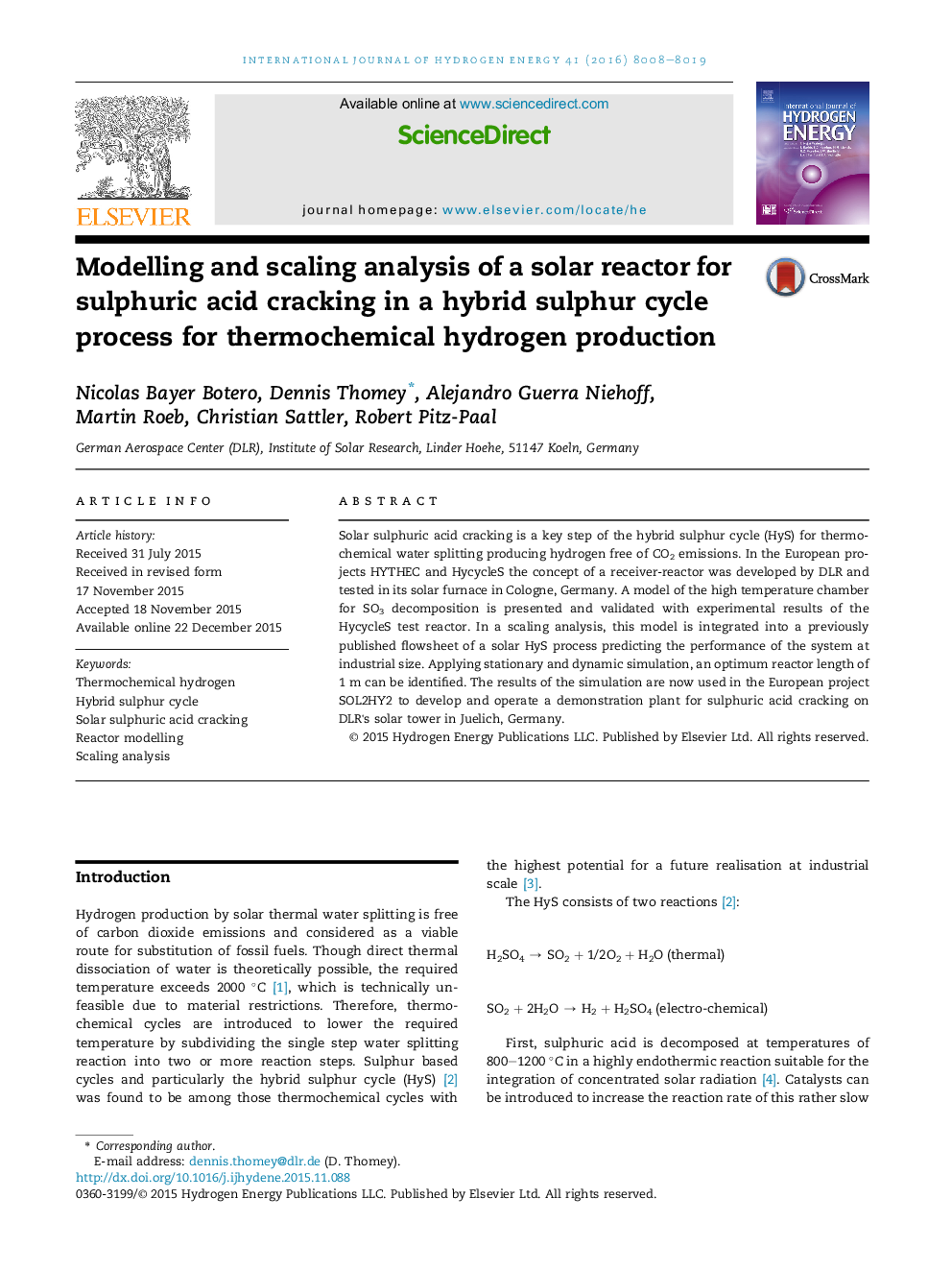| Article ID | Journal | Published Year | Pages | File Type |
|---|---|---|---|---|
| 1277295 | International Journal of Hydrogen Energy | 2016 | 12 Pages |
•Modelling of solar sulphuric acid cracking unit for hydrogen production.•Development of dynamic system model of solar SO3 decomposer.•Validation of model with experimental data of solar test reactor.•Integration of system model into process flowsheet of hybrid sulphur cycle.•Scaling analysis predicting performance of industrial solar hydrogen plant.
Solar sulphuric acid cracking is a key step of the hybrid sulphur cycle (HyS) for thermochemical water splitting producing hydrogen free of CO2 emissions. In the European projects HYTHEC and HycycleS the concept of a receiver-reactor was developed by DLR and tested in its solar furnace in Cologne, Germany. A model of the high temperature chamber for SO3 decomposition is presented and validated with experimental results of the HycycleS test reactor. In a scaling analysis, this model is integrated into a previously published flowsheet of a solar HyS process predicting the performance of the system at industrial size. Applying stationary and dynamic simulation, an optimum reactor length of 1 m can be identified. The results of the simulation are now used in the European project SOL2HY2 to develop and operate a demonstration plant for sulphuric acid cracking on DLR's solar tower in Juelich, Germany.
